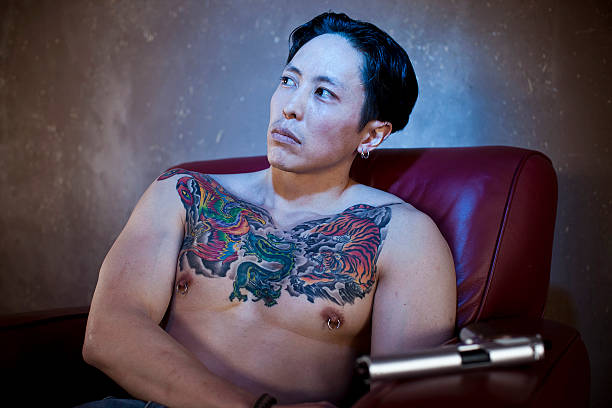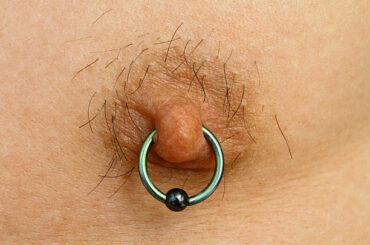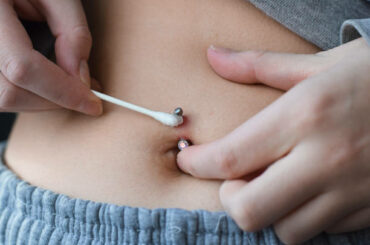Contents
01. Understanding the Causes for Nipple Piercing Bleeding
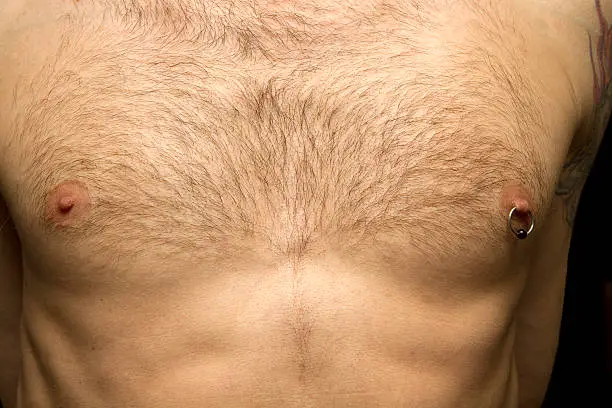
Nipple ring bleeding can be a concerning issue for individuals with nipple piercings, often signaling underlying problems that need attention. Whether it’s due to improper piercing techniques, allergic reactions, infections, or other factors, understanding the causes, symptoms, prevention strategies, treatment options, and potential complications associated with nipple ring bleeding is essential for maintaining the health and safety of your piercing.
One big reason why nipple rings might bleed is if they’re not put in right when you first get them. If the person doing the piercing doesn’t do it correctly, it can lead to problems like nipple ring bleeding. Another reason is if you accidentally hurt your nipple, like if it gets pulled or bumped really hard. That can cause bleeding around the piercing.
Sometimes, your body might not like the metal in the nipple ring, and it can react by getting all red and sore, which can make it bleed. That’s called an allergic reaction. Infections are another common cause of nipple ring bleeding. If germs get into the piercing, they can cause problems like redness, pus, or even more bleeding.
Lastly, too much rubbing or pressure on the nipple ring can make it bleed. This can happen if you wear tight clothes or do activities that put a lot of pressure on your nipples. So, it’s important to be careful and keep an eye out for anything that might make your nipple ring bleed.
02. Recognizing Symptoms of Nipple Piercing Bleeding

Nipple ring bleeding can cause several noticeable signs and symptoms. When this happens, you may observe redness around the piercing area. The skin might look redder than usual, indicating irritation or injury.
Swelling can also occur. This means the area around the nipple ring may appear puffy or larger than usual. It might feel tender or sore to the touch, indicating inflammation.
Another sign to watch for is discharge. You might notice a fluid coming out from the pierced area. This could be a clear fluid, or it might have a yellowish or greenish tinge, indicating an infection.
The most obvious sign of nipple ring bleeding is, of course, visible blood. You might see blood on your clothing or on the surface of the skin around the piercing. This could be a small amount or more significant, depending on the severity of the bleeding.
If you notice any of these symptoms, it’s essential to take action. Clean the area gently with saline solution or mild soap and water. Apply pressure to stop the bleeding if it’s still happening. If the symptoms persist or worsen, it’s crucial to seek medical attention to prevent further complications.
03. Risk Factors of Nipple Piercing Bleeding

Not taking good care of your piercing: When it comes to nipple ring bleeding, certain things can make it more likely to happen. One big factor is not taking good care of your piercing after getting it done. If you don’t clean it properly or follow the aftercare instructions given by your piercer, it can increase the chances of nipple ring bleeding.
Cheap or improper materials: Another risk factor is using low-quality jewelry for your nipple piercing. Cheap or improper materials can irritate the skin around the piercing, leading to inflammation and bleeding. It’s essential to choose high-quality jewelry made of materials like surgical steel or titanium to reduce the risk of nipple ring bleeding.
wearing tight clothing: Engaging in activities that put pressure on the piercing can also be a risk factor. Things like wearing tight clothing or participating in contact sports can cause friction or trauma to the piercing area, leading to bleeding. It’s crucial to be mindful of these activities and take precautions to protect your nipple piercing from harm.
Aggressive Handling: Handling or manipulating the nipple ring too roughly can irritate the piercing site and cause it to bleed. It’s essential to be gentle when cleaning or adjusting the jewelry to avoid unnecessary irritation.
Skipping Regular Cleaning: Neglecting to clean the nipple piercing regularly can lead to the buildup of bacteria and debris around the jewelry, increasing the risk of infection and subsequent bleeding.
Changing Jewelry Too Soon: Switching out your nipple jewelry before the piercing has fully healed can disrupt the healing process and lead to bleeding. It’s crucial to wait until your piercer gives you the green light to change your jewelry safely.
Ignoring Signs of Infection: If you notice symptoms of infection, such as increased redness, warmth, or pus around the piercing, ignoring them can lead to complications like severe inflammation and bleeding. It’s important to address any signs of infection promptly to prevent further problems.
Underlying Health Conditions: Certain health conditions, such as diabetes or autoimmune disorders, can affect the body’s ability to heal properly and increase the risk of complications with nipple piercings, including bleeding. It’s essential to discuss any pre-existing health conditions with your piercer before getting a nipple piercing.
By being aware of these additional risk factors and taking steps to mitigate them, you can help reduce the likelihood of experiencing nipple ring bleeding and promote the overall health of your piercing.
04. Prevention Strategies for Nipple Piercing Bleeding
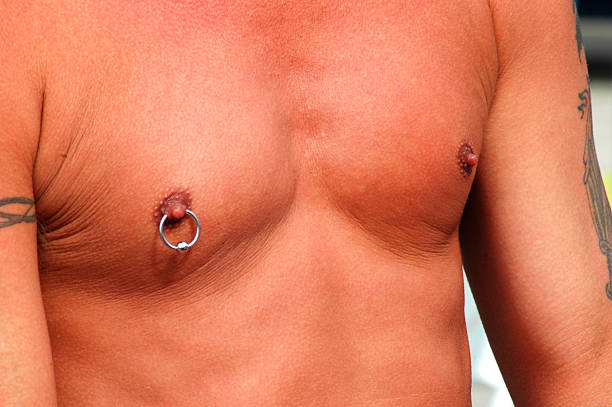
Use clean tools: To prevent nipple ring bleeding, there are a few things you can do. First off, it’s super important to pick a piercer who knows their stuff. A good piercer will use clean tools and have lots of experience, which lowers the risk of nipple ring bleeding from the get-go.
Following the aftercare instructions your: After you get your piercing, following the aftercare instructions your piercer gives you is key. That means cleaning your piercing regularly with a saline solution or gentle soap to keep it clean and help prevent nipple ring bleeding.
Watch out for is what you put near your piercing: Another thing to watch out for is what you put near your piercing. Harsh chemicals or rough fabrics can irritate the skin around your nipple ring and make it more likely to bleed. So, try to avoid those and stick to gentle, non-irritating products.
Mindful of what you’re doing: Lastly, be mindful of what you’re doing with your nipple piercing. Activities like sports or wearing tight clothes can put pressure on the piercing and lead to bleeding. So, take it easy and give your nipple ring some space to heal properly.
Avoiding Touching or Twisting: Resist the temptation to touch or twist your nipple ring, as this can irritate the piercing and increase the risk of bleeding. Keep your hands off and let your piercing heal undisturbed.
Keeping Clothing Clean and Loose: Make sure your clothing is clean and loose-fitting around the area of your nipple piercing. Tight or dirty clothing can rub against the piercing and cause irritation, leading to bleeding. Choose breathable fabrics and avoid wearing tight bras or shirts until your piercing has fully healed.
Maintaining Proper Hygiene: Good hygiene is essential for preventing nipple ring bleeding. Keep the area around your piercing clean and dry, and avoid using harsh soaps or cleansers that can strip away natural oils and irritate the skin.
Avoiding Hot Tubs and Pools: Steer clear of hot tubs, pools, and other bodies of water that may contain bacteria or chemicals that can irritate your nipple piercing and increase the risk of infection and bleeding.
Eating a Healthy Diet: Eating a balanced diet rich in vitamins and minerals can promote healing and reduce the risk of complications with your nipple piercing, including bleeding. Make sure to stay hydrated and eat plenty of fruits, vegetables, and lean proteins to support your body’s natural healing processes.
By following these additional prevention strategies along with the ones mentioned earlier, you can significantly reduce the likelihood of experiencing nipple ring bleeding and promote the health and healing of your piercing.
05. Treatment Options
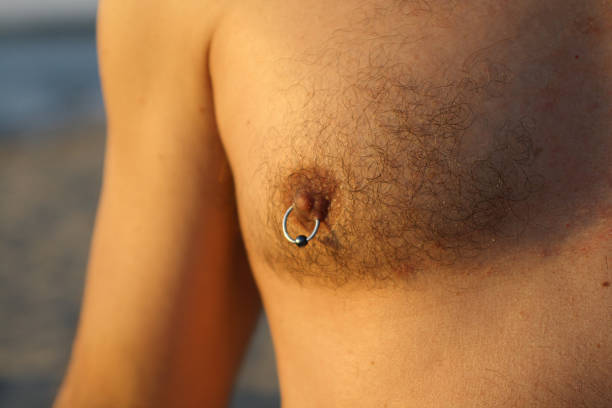
When you notice nipple ring bleeding, the first step is to remain calm. Begin by gently cleaning the area around the piercing with a saline solution. Saline solution is a mixture of salt and water that helps to clean the piercing without irritating the skin. You can either purchase pre-made saline solution or make your own by mixing non-iodized sea salt with warm water.
After cleaning the area, apply gentle pressure to the piercing using a clean cloth or gauze pad. This pressure helps to stem the flow of blood and encourages clotting, which is the body’s natural way of stopping bleeding. Hold the pressure for several minutes, allowing time for the blood to clot and the bleeding to slow down or stop completely.
If the bleeding persists despite your efforts, or if you notice any signs of infection such as increased redness, swelling, or discharge, it’s crucial to seek medical attention. A healthcare professional can assess the situation and provide appropriate treatment to address the underlying cause of the bleeding and prevent further complications.
It’s essential to remember that a small amount of bleeding is normal after getting a nipple piercing, especially during the initial healing period. However, if the bleeding is excessive or continues for an extended period, it may indicate a problem that needs to be addressed. By taking prompt action and seeking medical attention, if necessary, you can help ensure the health and safety of your nipple piercing.
06. Complications and Risks
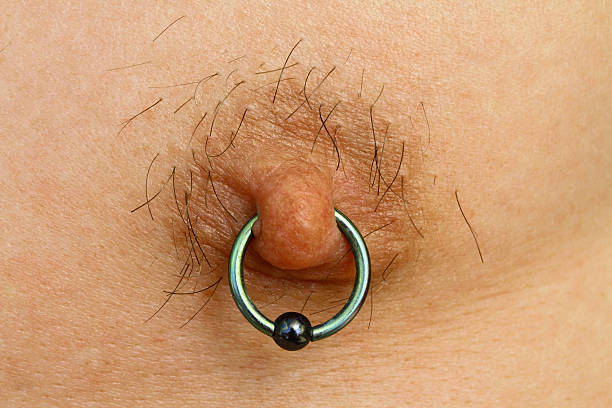
When nipple ring bleeding happens, it’s not just about the blood. There are risks involved that you need to be aware of. One big risk is infection. When there’s bleeding, it creates an opportunity for bacteria to enter the piercing site, which can lead to infection. Infections can cause more pain, swelling, and even pus coming out of the piercing.
Scarring is another potential complication of nipple ring bleeding. If the skin around the piercing gets damaged or irritated from the bleeding, it can heal in a way that leaves behind scars. These scars might not look pretty and could affect the appearance of your nipple piercing.
Sometimes, if the bleeding is severe or happens often, it can cause the piercing to move or migrate. This means the jewelry might shift position or even come out of the piercing altogether. It’s essential to address nipple ring bleeding promptly to avoid these complications and keep your piercing safe and healthy.
Nipple ring bleeding can lead to various complications and risks that you need to be aware of. One significant risk is delayed healing. When bleeding occurs, it can slow down the healing process of the piercing, causing frustration and discomfort while prolonging the time needed for proper care. Additionally, excessive bleeding can increase the sensitivity of the surrounding skin, making even gentle touches or movements painful and challenging to manage.
Another risk is allergic reactions to the material of the nipple ring. If your jewelry contains substances, you’re allergic to, such as certain metals or alloys, bleeding can worsen irritation and lead to symptoms like redness, swelling, or itching, complicating the healing process. Chronic bleeding is also a concern for some individuals, as recurrent episodes over an extended period can be frustrating and inconvenient, making it harder to maintain a healthy and stable piercing.
Furthermore, prolonged nipple ring bleeding raises the risk of secondary infections. These infections may be more severe and require stronger treatments to resolve, causing further discomfort and inconvenience. Moreover, the psychological impact of dealing with complications from bleeding should not be overlooked. It can lead to stress, anxiety, or feelings of self-consciousness, affecting your overall enjoyment of the piercing and your well-being.
Addressing nipple ring bleeding promptly and taking steps to prevent further complications is crucial for minimizing these risks and ensuring the long-term health and success of your nipple piercing. By staying vigilant and seeking appropriate care when needed, you can mitigate the potential complications associated with nipple ring bleeding and maintain a healthy piercing.
07. When to Seek Professional Help

Knowing when to seek professional help for nipple ring bleeding is crucial for your well-being. If you notice that the bleeding from your nipple ring doesn’t stop despite applying gentle pressure for several minutes, it’s a clear indication that you should seek assistance from a healthcare professional. Persistent bleeding can be a sign of an underlying issue that requires medical attention to prevent further complications.
Moreover, if the bleeding is particularly severe, meaning it’s heavy or continuous, it’s essential to reach out to a healthcare provider promptly. Severe bleeding can lead to excessive blood loss and may indicate a more serious problem with your nipple piercing that needs urgent evaluation and treatment.
Additionally, if the nipple ring bleeding is accompanied by other concerning symptoms, such as increased pain, swelling, warmth, or signs of infection like redness, tenderness, or pus, it’s crucial to seek professional help as soon as possible. These symptoms could indicate an infection or other complications that require medical intervention to prevent further harm.
Don’t hesitate to seek assistance from a healthcare professional if you’re worried about your nipple ring bleeding. They have the knowledge and expertise to assess the situation, provide appropriate treatment, and help you navigate any complications effectively. Your health and safety are paramount, so it’s always better to err on the side of caution and seek medical advice when in doubt.
Conclusion
In conclusion, nipple ring bleeding is not just a minor inconvenience but can indicate significant issues that require attention and care. By being aware of the causes, symptoms, risk factors, prevention strategies, treatment options, and when to seek professional help, individuals with nipple piercings can take proactive steps to promote healing, prevent complications, and ensure the long-term health and well-being of their piercings. Remember, your health and safety always come first, so never hesitate to seek assistance if you’re experiencing nipple ring bleeding or any related concerns.

